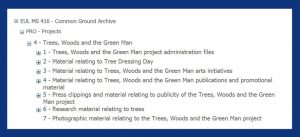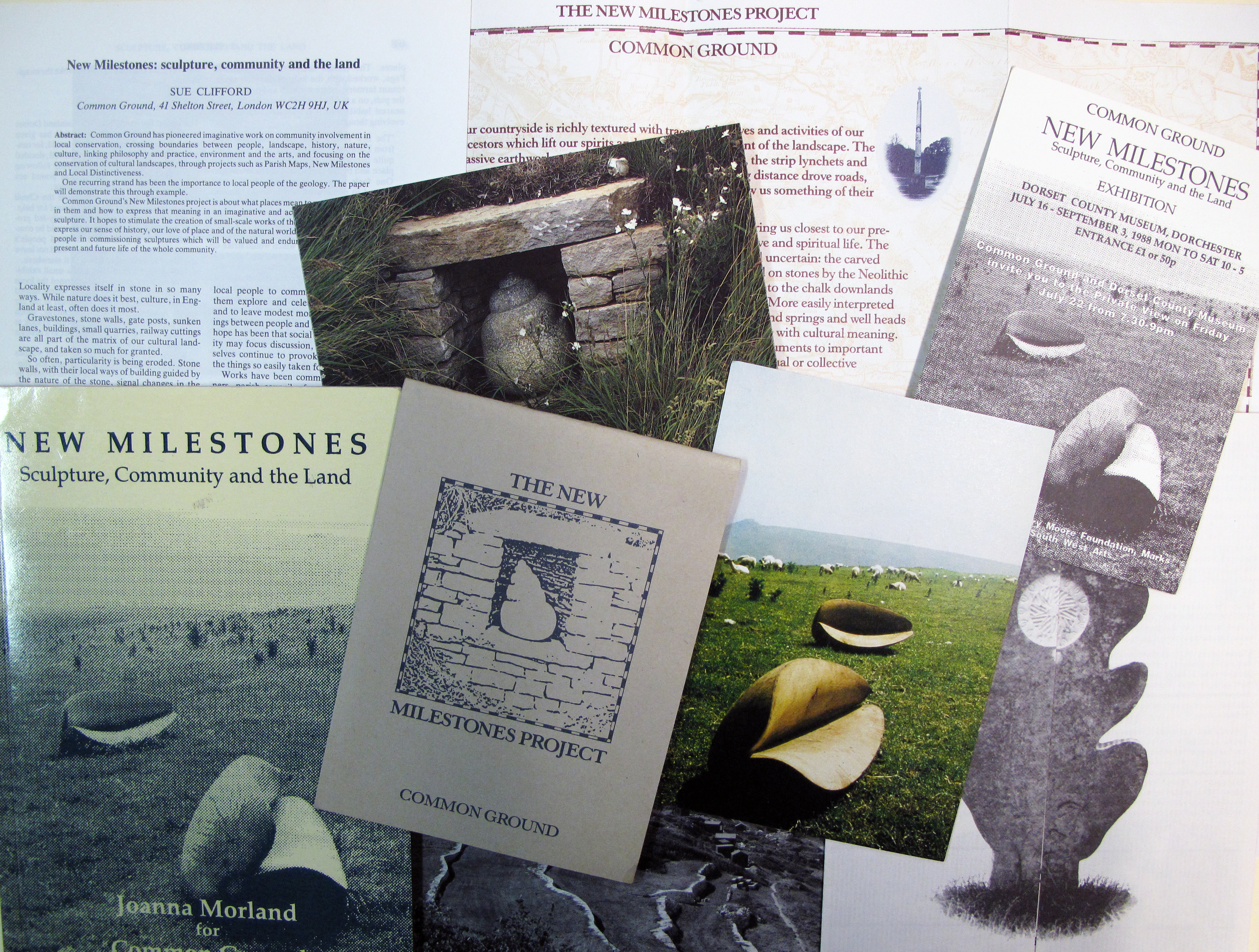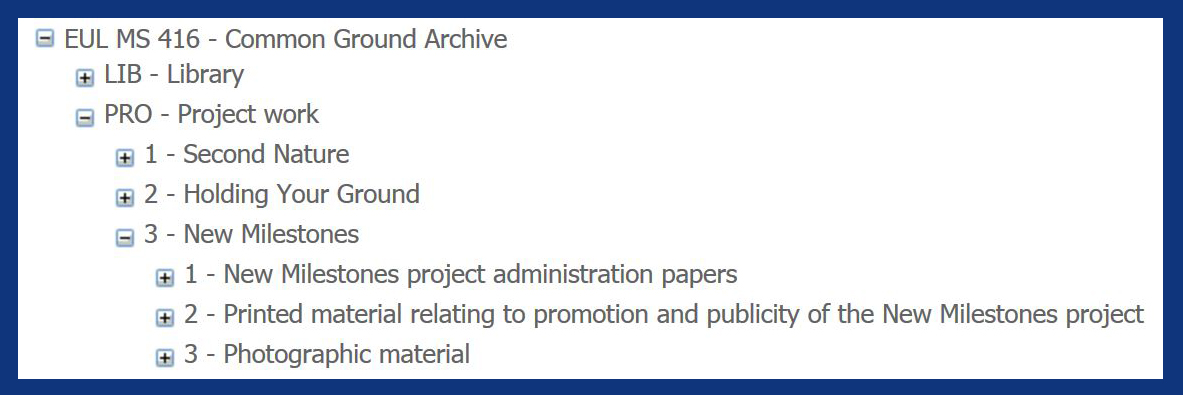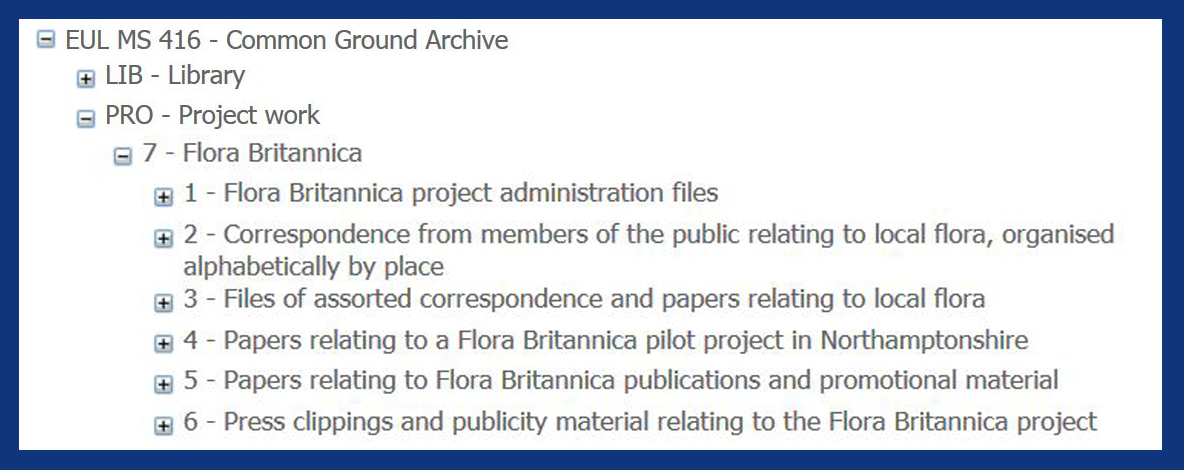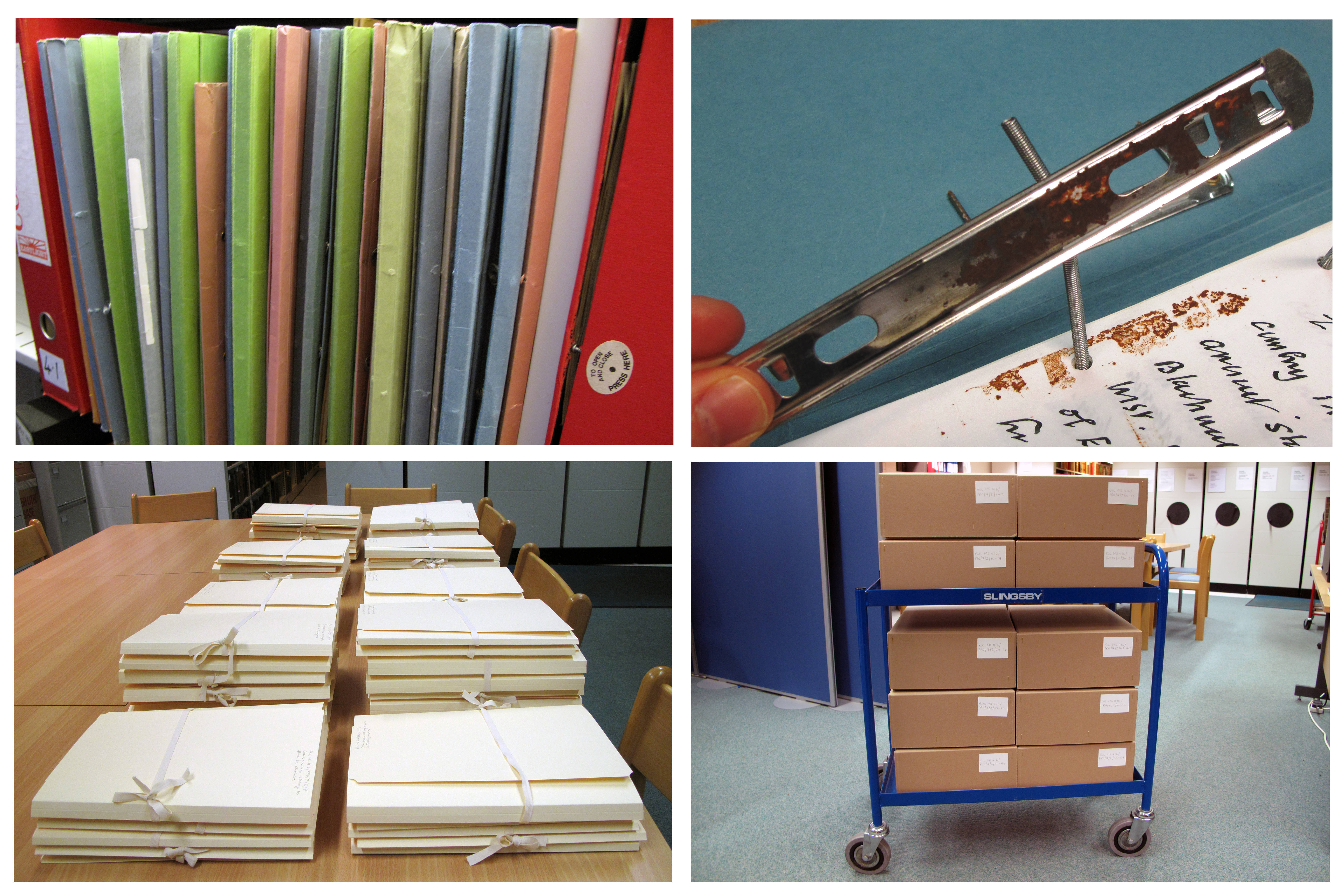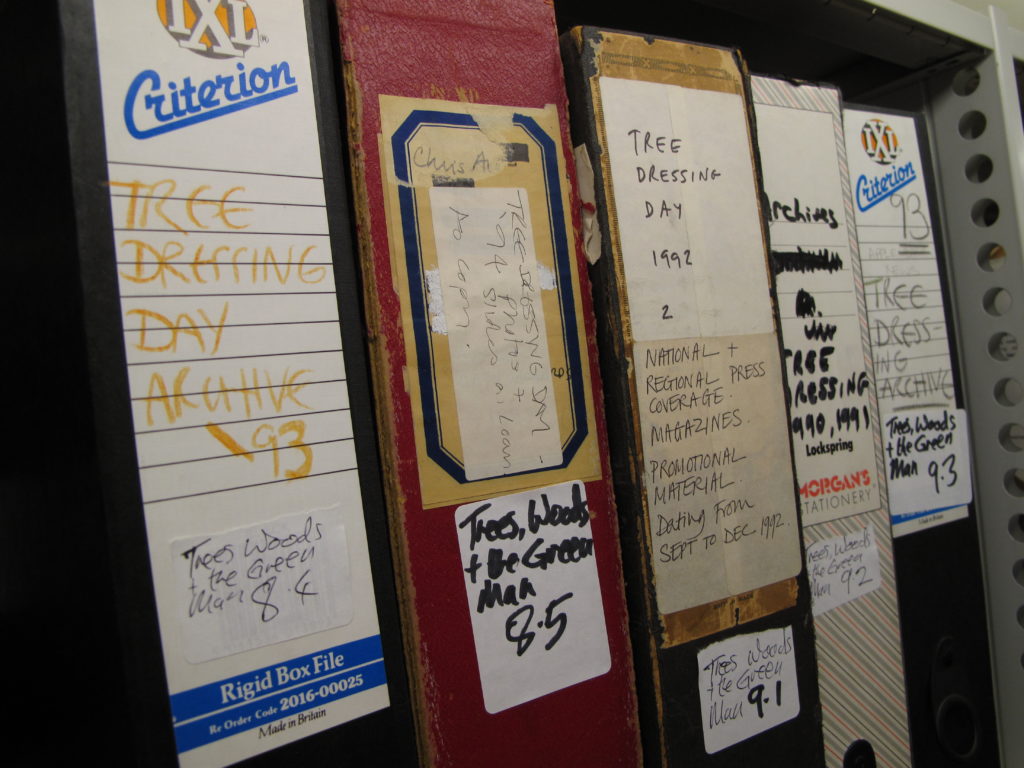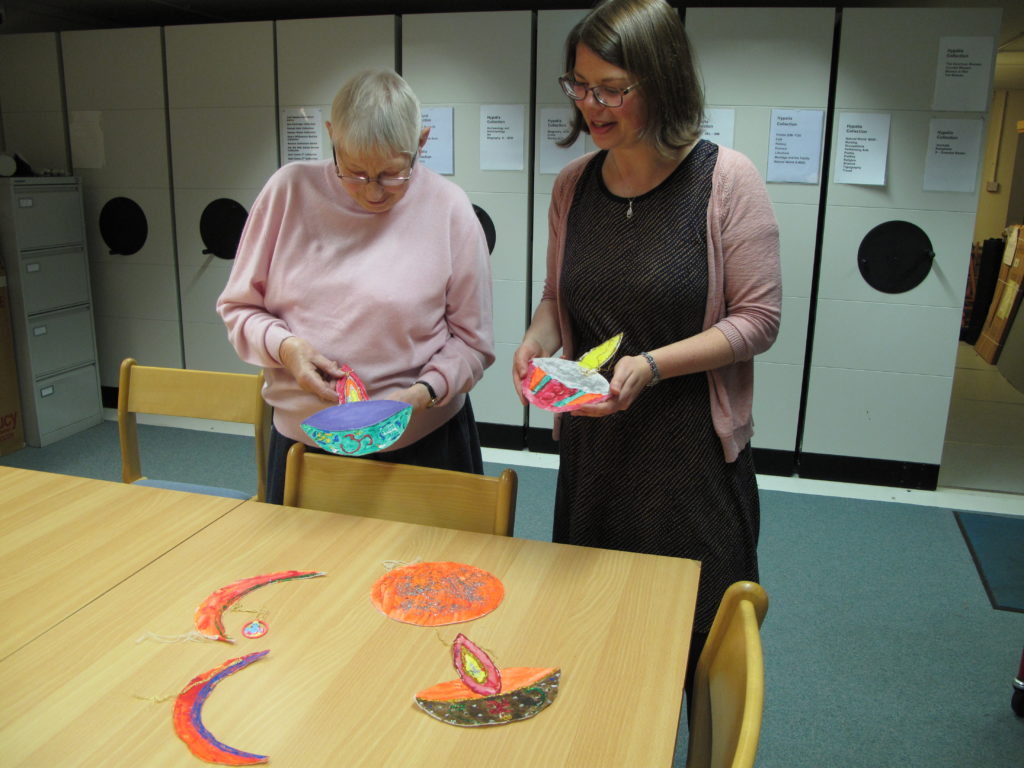The Common Ground archive cataloguing project is now nearing its end and the final two sections of project material – relating to the Trees, Woods and the Green Man project and the Field Days project – have been catalogued. Read on to find out more about these projects and the archive material relating to them.
Trees, Woods and the Green Man
Common Ground started work on the Trees, Woods and the Green Man project in 1986. The aim of the project was to raise awareness of ‘the importance of trees by exploring their aesthetic, spiritual and cultural value as well as their ecological importance’ (King, A and Clifford, S (eds),’Trees be Company’ (1989), p. xi). Throughout the project, Common Ground commissioned works by sculptors, artists, writers, poets and playwrights to explore themes around trees and woods. In 1989, Common Ground won the Prudential Award for Excellence in the Visual Arts for its work on the Trees, Woods and the Green Man project. Common Ground used the prize of £25,000 to commission further sculptural works, including works by Peter Randall-Page. Common Ground also collaborated with sculptors and artists to produce exhibitions about trees and the arts, including ‘The Tree of Life: New Images of an Ancient Symbol’ in 1989 and ‘Leaves’ by Andy Goldsworthy in 1989-1990. Furthermore, the project generated new campaigns and initiatives, such as the campaign to let fallen or damaged trees recover after the ‘Great Storm’ of 1987, and the initiative to develop a new calendar custom called Tree Dressing Day (you can find out more about Tree Dressing Day in our blog post: Tracing the ‘roots’ of Tree Dressing Day in the Common Ground archive). Common Ground produced several publications as part of the Trees, Woods and the Green Man project, including ‘Trees Be Company: An Anthology of Poetry’ (1989 and 2001), ‘In a Nutshell: A manifesto for trees and a guide to growing and protecting them’ (1990), and a special edition broadsheet newspaper ‘Pulp! with contributions from actors, authors, artists and cartoonists (1989)’, as well as a range of leaflets and postcards.
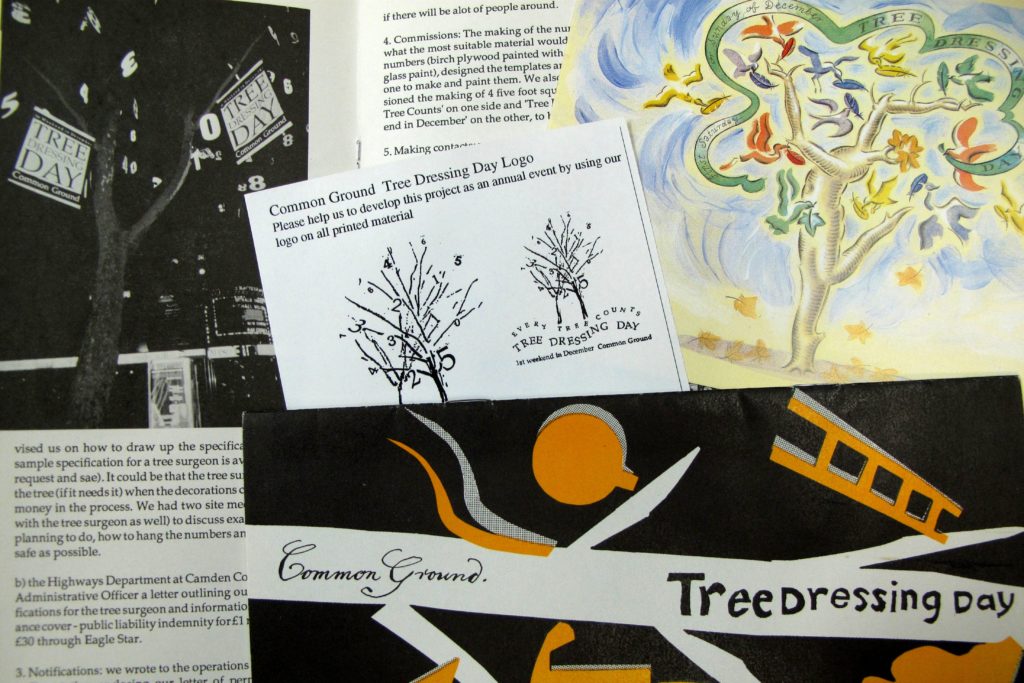
Promotional material relating to the Tree Dressing Day initiative (EUL MS 416/PRO/4/4/1)
Material in this sub-section of the archive includes:
- files of assorted material relating to the administration of the Trees, Woods and the Green Man project by Common Ground;
- material relating to the Tree Dressing initiative;
- material relating to Trees, Woods and the Green Man arts initiatives (including artistic commissions, literary commissions, exhibitions, and events), which include papers relating to Common Ground’s work with artists such as Andy Goldsworthy and David Nash, amongst others;
- material relating to Trees, Woods and the Green Man publications and promotional material produced by Common Ground, including ‘Trees Be Company’, ‘In a Nutshell’, and ‘Pulp!;
- press clippings and material relating to publicity of the Trees, Woods and the Green Man project;
- research material, including general research material about trees, reports and publications produced by governmental and environmental bodies, and research material concerning the Great Storm of October 1987;
- and photographic material.
You can find the full catalogue description of the Trees, Woods and the Green Man section here or by clicking the image below.
This section of the archive may be of particular interest to anyone researching Common Ground’s collaborations with sculptors, artists, writers, actors, poets and playwrights, as the project involved a large number of commissions. The material relating to the commissions includes correspondence, press clippings, photographs and – in some cases – interviews with sculptors about their work.
There were several personal highlights for me in this section of the archive. I particularly enjoyed a file containing questionnaires completed by local authority tree officers, which gave insight (and some amusing anecdotes!) into common perceptions and complaints from the public about trees. The archive material relating to the Tree Dressing initiative is also fascinating, and includes correspondence, reports, and a large number of beautiful photographs of Tree Dressing events held around the UK in the 1990s. And I was excited to recognise some famous names in this section of the archive! Files concerning Common Ground’s special-edition newspaper ‘Pulp!’ include letters from those invited to contribute to the newspaper, including Victoria Wood, Martin Amis and Germaine Greer.
Field Days
The Field Days project was launched in 1995 to highlight the historical, cultural and social importance of fields, to celebrate their contribution to local distinctiveness, and to encourage people to take a more active role in their conservation. A variety of publications were produced by Common Ground as part of the Field Days project, including postcards, leaflets, pamphlets, and a book entitled ‘Field Days: An Anthology of Poetry’ (1998). A major initiative of the project was to highlight and uncover the variety of field names in the UK, and to encourage people to research, restore and celebrate the field names in their local areas. In July 1996, Common Ground was commissioned by the Department of the Environment to produce a laminated panel exhibition on the subject of Field Days for the Royal Agricultural Show, which was subsequently available for hire. In addition, Common Ground launched a Field Days poetry competition in partnership with Blue Nose Poetry, and collaborated with theatre groups, writers, poets, artists, craftspeople, photographers, and local communities to explore different ways of engaging with the diverse stories a field might tell.
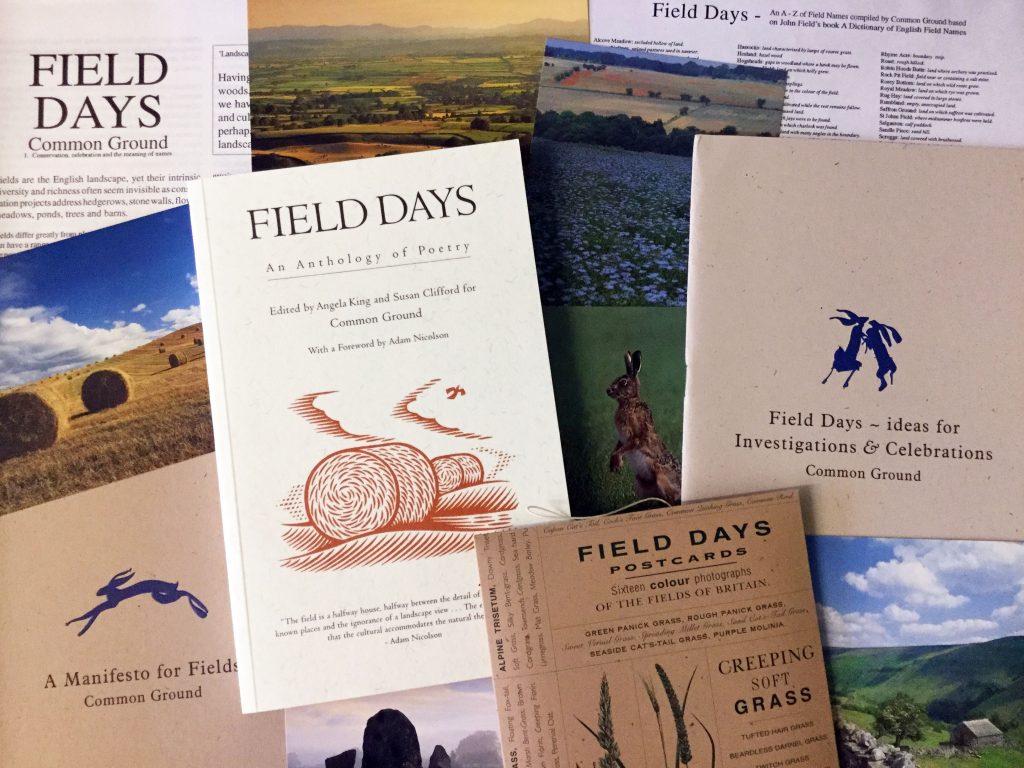
Publications and promotional material produced for the Field Days project (EUL MS 416/PRO/11/2/7)
Material in this sub-section of the archive includes:
- assorted papers relating to the administration of the Field Days project, including correspondence, project outlines and project planning papers; project reports; funding applications; papers relating to Field Days publications produced by Common Ground, including drafts; papers relating to field names; papers relating to field events; and research material press clippings, and notes;
- promotional material and publications produced by Common Ground for the Field Days project, including flyers, postcards, leaflets, press releases, pamphlets and books, as well as papers concerning the content, design and printing of publications;
- papers relating to the Field Days panel exhibition, which was first displayed at the Royal Agricultural Show in 1996 and subsequently went on tour and was available for hire;
- papers relating to the Field Days poetry competition in 1997, which was organised by Common Ground in collaboration with Blue Nose Poetry;
- material relating to arts initiatives concerning fields and the Field Days project, including responses from artists interested in being involved in the Field Days project and wishing to be added to Common Ground’s ‘of visual and performing artists, craftspeople and photographers who are interested in expressing and celebrating / documenting the cultural significance of the field in the British landscape’;
- press clippings and material relating to publicity of the Field Days project, including promotional material, summaries of press coverage, correspondence, and two cassette tape audio recordings of radio interviews;
- research material relating to fields, including field names and scarecrows;
- and 18 slide storage sheets containing 35mm photographic slide transparencies relating to the Field Days project.
You can find the full catalogue description of the Field Days section here or by clicking the image below.
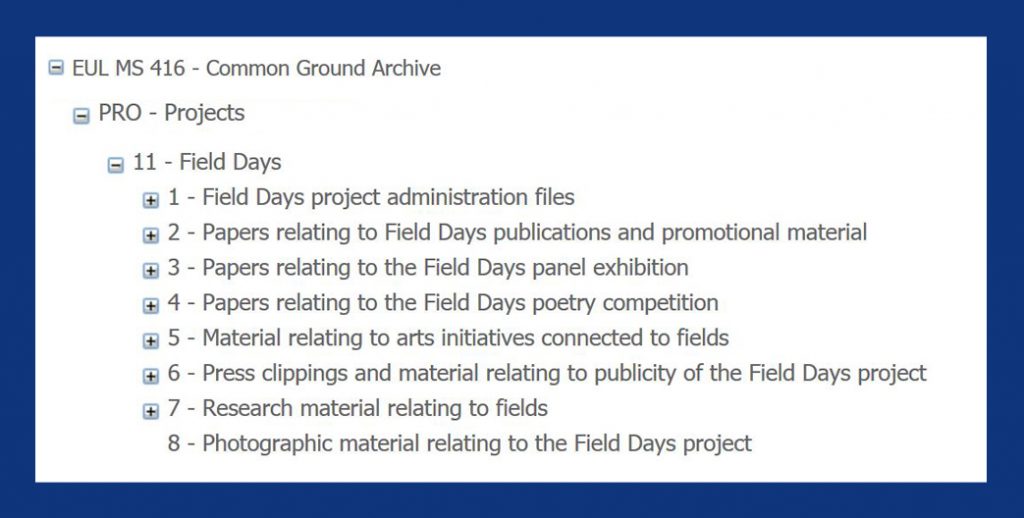 In the final few weeks of the cataloguing project, I’ll be looking to make the Common Ground’s general papers relating to administration, correspondence, finance and research more accessible. And I will look forward to writing to you again soon with my final blog post of the project!
In the final few weeks of the cataloguing project, I’ll be looking to make the Common Ground’s general papers relating to administration, correspondence, finance and research more accessible. And I will look forward to writing to you again soon with my final blog post of the project!
By Annie, Project Archivist
Why not start your exploration of the Common Ground archive via our online archives catalogue today?
You can also find out more about the Common Ground archive cataloguing project by taking a look back at our previous blog posts
